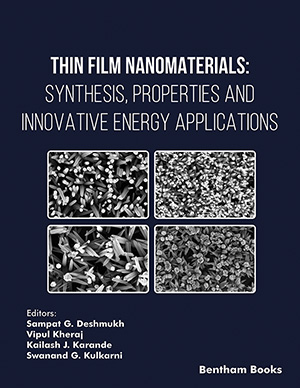
Abstract
In this short review paper, surface energy and site dependent cohesive energy of several Ag clusters are investigated via broken bonds theory and density functional theory simulation. The theoretical and simulation results shows that surface energy of Ag clusters γs(N) are almost equal to the Ag bulk value γs(∞), which shows no size dependence. Considering specific sites, cohesive energy of surface atoms Ecsx(N) are related to their coordinated numbers Zsx(N). While cohesive energy of interior atoms Ecix(N) are influenced by the high pressure existing in clusters.
Keywords: Clusters, surface energy, site dependent cohesive energy, first-principles simulation;, interface energy, cohesive energy, magic number, quasi-crystalline structure, vacancy formation energy, size dependence, site dependence, structure dependence, charge transfer, orbital hybridization, interior pressure
Current Nanoscience
Title: Surface Energy and Site Dependent Cohesive Energy of Ag Clusters
Volume: 7 Issue: 3
Author(s): D. Liu, Z. Wen and Q. Jiang
Affiliation:
Keywords: Clusters, surface energy, site dependent cohesive energy, first-principles simulation;, interface energy, cohesive energy, magic number, quasi-crystalline structure, vacancy formation energy, size dependence, site dependence, structure dependence, charge transfer, orbital hybridization, interior pressure
Abstract: In this short review paper, surface energy and site dependent cohesive energy of several Ag clusters are investigated via broken bonds theory and density functional theory simulation. The theoretical and simulation results shows that surface energy of Ag clusters γs(N) are almost equal to the Ag bulk value γs(∞), which shows no size dependence. Considering specific sites, cohesive energy of surface atoms Ecsx(N) are related to their coordinated numbers Zsx(N). While cohesive energy of interior atoms Ecix(N) are influenced by the high pressure existing in clusters.
Export Options
About this article
Cite this article as:
Liu D., Wen Z. and Jiang Q., Surface Energy and Site Dependent Cohesive Energy of Ag Clusters, Current Nanoscience 2011; 7 (3) . https://dx.doi.org/10.2174/157341311795542598
| DOI https://dx.doi.org/10.2174/157341311795542598 |
Print ISSN 1573-4137 |
| Publisher Name Bentham Science Publisher |
Online ISSN 1875-6786 |
Call for Papers in Thematic Issues
Advanced Inorganic Nanocomposites and their Emerging Applications
This special issue will highlight developments in the recent trends in the synthesis of metal oxides, nanoclusters, biomaterials, 2D nanomaterials, nanocrystals, nanocomposites, etc., and their applications in electrochemical systems, tissue regeneration, energy storage and harvesting, sensors, etc. The novelty of the methods in the chemical synthesis, as well as their ...read more
Advanced Nanotechnology in Forensic Science: Revolutionizing Fingerprint Identification and Crime Scene Analysis
This special issue aims to provide a comprehensive exploration of the innovative fusion between nanotechnology and forensic science. It aspires to bridge the gap between traditional investigative techniques and cutting-edge nanoscale applications, envisioning a paradigm shift in forensic analysis. By compiling the expertise of multidisciplinary experts, the book's objectives include ...read more
Graphene and 2D Materials for Energy Storage and Conversion.
This thematic issue will discuss the recent advances in graphene-based nanomaterials for different energy technologies. Graphene possesses a high surface area, and stable structure and exhibits many interesting electronic, optical, and mechanical properties due to its 2D crystal structure. Graphene is of both fundamental interest and suitable for a wide ...read more
Nanopathology; A Promising Approach for Targeted Cancer Treatment
Cancer is the most challenging diseases in treatment worldwide. Recently, the nanotechnology opened the gate for targeting the cancer as a promising therapy. The small size and exceptional properties of nanoparticles give it several advantages for easily targeting of cancerous cells. Furthermore, this advantage allows them to easily penetrate deeply ...read more
Related Journals
 7
7
- Author Guidelines
- Graphical Abstracts
- Fabricating and Stating False Information
- Research Misconduct
- Post Publication Discussions and Corrections
- Publishing Ethics and Rectitude
- Increase Visibility of Your Article
- Archiving Policies
- Peer Review Workflow
- Order Your Article Before Print
- Promote Your Article
- Manuscript Transfer Facility
- Editorial Policies
- Allegations from Whistleblowers






















